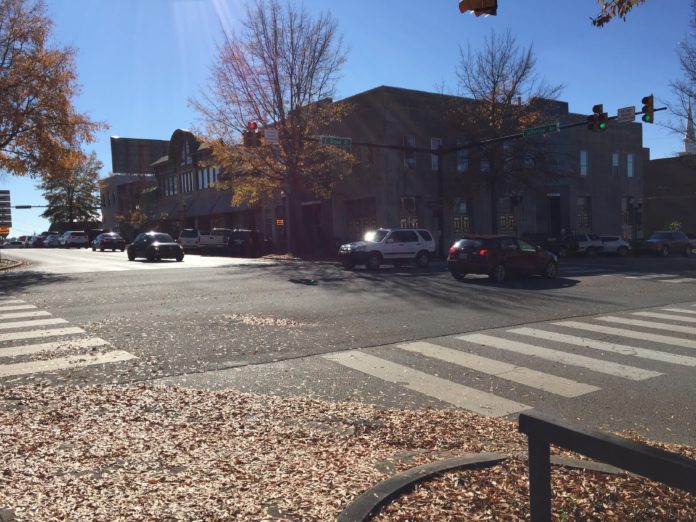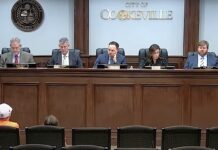By Amye Anderson
UCBJ Managing Editor
PUTNAM COUNTY – Drivers who travel in and around the county likely have their own list of roadway and intersection issues they’d like to see something done about. From dangerous intersections to too-slow traffic flow, the county’s growth spurt in recent years has magnified some of the local traffic woes.
Members of the county’s newly minted Putnam County Transportation Study Committee met last week to review a list of potential road improvements and projects proposed by representatives of each of the county’s municipalities.
Formed by Putnam County Executive Randy Porter earlier this year, the transportation committee’s main objective is to update the county’s transportation plan; something Porter says hasn’t been done since 2004. It’s a task that would help boost the county’s chances of receiving Tennessee Department of Transportation (TDOT) funding through the Improve Act.
“The main reason for the committee is, with all the growth our county is experiencing, we have to be planning for the future when it comes to roads and transportation,” he told the UCBJ. “New businesses and over 3,000 new jobs in the past three years, along with a residential building boom, brings transportation problems that will have to be addressed both now and in the future.”
A brief snapshot of improvements proposed by the committee for the county include, in no particular order, installing a turning lane on Gainesboro Grade at County Farm Road; installing signaling and a turning lane on Highway 70 from the Cookeville city limits to Highway 56 at Baxter; widening Highway 136/North Washington Avenue, from 17th Street to the entrance of Cookeville High School, to five lanes; installing a third lane on Interstate 40/Monterey mountain for truck traffic.
The list, still in the draft stages, reflects only a portion of the roadways and intersections identified by the county as being in need of repair or improvement. Once problematic roadways and intersections have been identified, the county and its participating municipalities will have to officially recognize them, and a plan for corrective measures, in their respective street plans.
“In our county, we tend to do everything as a team; whether it be economic development, tourism, or events like the TSSAA football championships,” Porter told the UCBJ. “I don’t think this should be any different. We have a wealth of experience and knowledge on the committee with our planners and economic development members, but we also have representation from all our municipalities which is key in putting together a plan like this. We are always stronger as a team than we are individual(ly).”
During the committee meeting, members also reviewed a list of the city’s problematic traffic areas identified by WSP, a firm selected by the city of Cookeville to study and identify potential improvement areas on local roadways within its boundaries.
Cookeville Planning Director James Mills stressed that the potential projects identified by WSP were not set in stone as projects that would be completed, but rather a recommendation from the firm as projects they view as most-needed.
“That’s not necessarily the city of Cookeville’s list of priorities,” Mills said. “It’s just the engineering firm’s recommendation.”
The lengthy list of proposed projects identified in that study included several recommended improvements to South Willow Avenue; widening Spring Street to five lanes; and construction of the Northern East-West Connector (a new east-west route north of Cookeville, including a grade-separated interchange at Highway 111 and Quinland Lake Road.
The study also proposes several improvements to South Jefferson Avenue, including providing dual eastbound left turning lanes and addressing the headaches surrounding the Pilot truck stop access.
WSP’s study findings still need to be reviewed and accepted by both the city’s planning commission and the city council – acceptance of the study is anticipated to happen at a future meeting of each entity, respectively.
The WSP study was funded with planning grant monies from TDOT. The 90/10 grant – 90 percent funded by the state with the remaining 10 percent funded locally – was a little more than $190,000 with the city being responsible for a little more than $17,000, Mills said.
According to Mills, the city wanted some additional information that was not covered by the planning grant; more specifically, information regarding coordination of the city’s traffic signals. Under a separate contract, the city tasked WSP with conducting the signal synchronization study.
In all, the studies have taken just under one year to complete. Mills says the city looks to implement the recommendations from the synchronization study, with no official final decision on which sections of the city will see those improvements first. Several areas have been tagged for updates, including the signals around the square.
“We’re considering which ones to start with first,” Mills said.
According to the city’s 2030 plan, approved in 2010, approximately 45 percent of the local streets were found to be in less than good condition, up from 39 percent reported in 1999. This is an indication that not enough funding is being applied to street repairs and resurfacing, the plan states.









